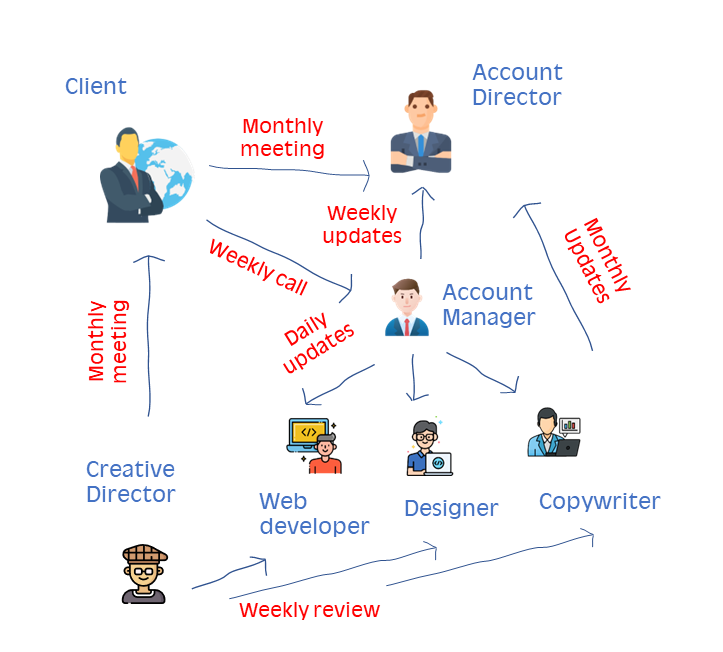
Lost in translation
- 7 min read
A rarely discussed hurdle on the innovation journey is the inevitable and destructive game of ‘Broken Telephone’ that accompanies most projects. Called various names in different cultures, ‘Broken Telephone’ is a game where someone whispers a message into the ear of the next person. They repeat what they think they heard to the next person. And so on. At the end of the chain the message is relayed out loud – and it rarely reflects the initial idea.

And we see this occurring with innovation projects: let’s assume that you are the innovation leader, and have orchestrated the right configuration of your team, and have direct ownership of the area to be affected by the innovation. You have set the direction and allocated responsibilities, In short, you are set up to succeed, but within months you are getting frustrated with the apparent lack of progress. The iterations are being used to correct misunderstandings of the delivery team, rather than the application of learnings from experiments. The coordination of the activity is swallowing up valuable resource. There is a lack of ownership. You're not making sufficient progress.
If this sounds familiar, it’s probable that you’ve encountered the innovation ‘Broken telephone’.
A client example
To bring this to life, let’s describe a recent example. A client had engaged their marketing agency to help them develop an innovation project. The client had the key relationship with the agency Account Director. The Account Director then engaged an Account Manager to effectively project manage the activity. The Account Manager then handled parcels of work out to a Graphics Designer, a Web Designer and a Copywriter. These three were also overseen by the Creative Director.

In the words of the client “The process wasn’t working for me. I kept having to repeat myself, the work I received back didn’t reflect the conversations that I’d been having, there were significant delays between iterations, not least because the people doing the work were clearly working on multiple other projects at the same time and I couldn’t get in front of them. The ideas coming back simply weren’t aligned.”
Handovers are destructive
In this example, there were handovers between the Account Director and Account Manager, The Account Director and the Creative Director, the Creative Director and the Graphics Designer, the Web designer and the Copy-writer and the Account Manager and the Graphics Designer, the Web Designer and the Copy-writer. Seen through this lens, it’s not surprising there were challenges.
The fundamental issue is that every time someone needs to get briefed, and updated there is an element of waste introduced to the project. This waste comes in several categories:
Waste 1: Information loss – c. 30% of the message will get lost at each step
The idea that information gets lost in a handover is well understood in mathematics. Back in the 1940’s, Shannon’s Information Theory modeled this idea of ‘information entropy’ and the resulting work sits at the heart of video and image compression. Studies have shown this is in day-to-day life, including some research in the nursing profession highlighted that 100% of information was lost in verbal handovers after 3 cycles [handovers]. Even when notes were taken, 70% of the information was lost after 5 cycles.
The fundamental problem of communication is that of reproducing at one point either exactly or approximately a message selected at another point.
Waste 2: Every handover will generate a delay – You can assume a minimum of one day for each handover
Every time a handover is to take place, it needs to be arranged, carried out and documented. Given that most people’s calendars are full, there is effort required to coordinate this and inevitable delays in getting the handovers to take place.
Given these constraints, key elements of the innovation team end up ‘waiting’ for feedback – thereby incurring further waste.
Waste 3: Every handover takes the recipient one step further away from focusing on the big picture
The nature of innovative projects is that you need constant communication between the business ideas and the solution design. In our article on Clarkson's theory, we highlight that Business and Design should be treated as ‘siblings’, and the same is true between other functions. But when there are (say) 3 handovers between the different teams, this doesn’t happen.
Furthermore, the handovers lead team members to become more task driven with the aim of preparing for the next review, rather than keeping an eye on, and being invested in, the bigger picture.
Way forward – the Minimum Viable Team
The ‘2 pizza rule’ was famously created by Amazon to describe the optimum size of a meeting (Every meeting should be small enough so that attendees could be fed with 2 pizzas). When it comes to planning your innovation team, you need to be following the same principle - trying to find the ‘Minimum Viable Team’.
“A jack of all trades is a master of none, but oftentimes better than a master of one.”
The Minimum Viable Team is the smallest number of people that you can pull on to deliver a project in a given time constraint. When building an MVP you are better in leveraging the broader skills of a smaller number of people than having 'experts' who barely leverage their specialist skills. In some project experts may be required, but the trade off between expertise and team size should be considered.
Teams tend to get bloated for political reasons, for change management reasons and from a lack of confidence in the team’s competence. However, in our experience we have seen how very small teams can be massively effective – even in a corporate setting.
Conclusion
In summary, the simple way of avoiding the destructive nature of handovers is not to have them. Build the smallest possible team around the idea, who work closely with open communication.
There is a famous story when Andy Rubin tried to pitch Android to Samsung in 2004. At the end of the pitch, one of the execs allegedly said ‘You and what army are going to go and create this? You have six people. Are you high?’.
Take aways
Here are a set of questions to help trigger your thinking about innovation team structure:
Digital Divisor
We are a specialist innovation business with a unique way of delivering projects. If you have any questions, please get in touch. We'd love to hear from you.